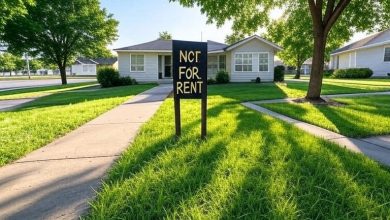You Can

When I first started Financial Samurai back in 2009, I had idyllic dreams of helping as many people as possible achieve financial freedom. My finances were crumbling during the global financial crisis, and I wanted to break free from the corporate grind. So I wrote about how to do just that.
But like anything, over time, those starry-eyed hopes fade as reality sets in: you likely won’t be able to help as many people as you imagined. And as more time passes, you realize that no matter how hard you try, you can’t help people if they don’t want to help themselves.
When I accepted this truth, a sense of peace washed over me. I stopped trying to save the world and began trusting that, in the long run, everyone will act rationally in their own best interest.
It’s Impossible to Help If There’s No Buy-In
Recently, I got an email response from a newsletter reader who said, “Thanks for your email, but honestly, it’s kind of depressing that you write about people with $5 million net worths trying to get to $10 and $15 million net worths. How many people can even just reach a $1 million net worth?”
I’ve certainly written about high-income and high-net-worth individuals before. However, nowhere in my June 15, 2025 weekly newsletter did I write about multi-millionaires trying to reach decamillionaire status. Instead, I discussed:
- Benign May inflation numbers, yet the stubborn rise in Treasury bond yields after Israel bombed Iran, and Iran retaliated
- My terrible life insurance mistake that cost me a small fortune and what you should learn from it
- The reacceleration of AI interest with the Scale AI acquisition by Meta and strong IPO performance from several tech companies
- The end of being a stay-at-home dad and what I’ve learned to help other dads who are considering
I had to double-check my newsletter to find out what the reader was referring to because I couldn’t recall.
But what’s more surprising is that I’ve mentioned my book, Millionaire Milestones: Simple Steps to Seven Figures, almost every week in some capacity for four months. The book is literally written to help those who haven’t achieved a million-dollar net worth get there—and then, for those who have reached the threshold, to amplify their wealth.
So, when I asked the reader whether he had read the book, he said he had not. Despite my efforts for the past 2.5 years writing and editing it, he decided the perfect book for his situation was not worth it. And that is completely fine!
However, you can’t say you’re unhappy why I’m not writing more for your situation when I’ve literally written a book exactly for your situation.
It’s Easier to Wear Slippers Than Carpet the World
In the past, I tried to meet every request. It was exhausting because everyone came from a different place. There was no efficient way to cover all topics without spending a huge amount of time writing every week.
Over time, I stopped enjoying the process because I was writing for others, not for myself. When you don’t write free, burnout is inevitable—it becomes just another job. I wanted the freedom to create on my own terms, which is one of the reasons I left finance in the first place.
You see, it’s easier to wear slippers than carpet the world. If you have a problem, it’s better to seek someone who’s faced the same issue for guidance, rather than expecting others to conform to your situation.
You can’t remove every tempting food from the world or stop processed food executives from making more poison due to the money. But you can stock your home with healthy food, find an exercise you enjoy, and build your own habits.
You can’t make other drivers better or traffic disappear. But you can leave earlier, listen to a podcast, or practice patience.
You can’t control the market or the Fed. Instead of trying to predict every move, build a diversified portfolio aligned with your goals and risk tolerance.
You can’t change a difficult boss or toxic office culture. But you can change how you respond—set boundaries, document your work, or find a new job.
Wear your slippers, folks! Your finances are your personal responsibility to get right.
Everybody Is Long-Term Rational When It Comes To Finances
Once you start focusing on changing yourself instead of trying to change others, life feels easier. And when you realize people usually figure things out for themselves, you don’t have to stress about anyone else’s money anymore. That kind of mindset brings a lot more freedom.
Here are some common examples.
1) Looking for a better asset allocation after a stock market scare
If you just went through an unpleasant bear market and are looking for a resource to help you rebalance your portfolio to match your risk tolerance, you’d just Google a proper asset allocation model of stocks and bonds by age. You’d then read the article, understand the risks and rewards, and rebalance accordingly.
You’re not just going to sit around and get pounded when the next bear market hits.
2) Drowning in credit card debt
After taking on one too many credit cards, you find yourself drowning in revolving consumer debt with a 28% APR. Instead of continuing to spend more than you make, the pain of seeing your consumer debt grow forces you to stop spending and slash expenses. The next step you’d rationally take would be to pay down your credit card debt as quickly as possible using the DAIR method.
You wouldn’t continue to spend like a maniac if you wanted the peace of mind of being debt-free.
3) Need to find a better job that comfortably pays the bills
After majoring in Art History, you’re unable to find a job making more than minimum wage. You rationally pursued this major because your parents were wealthy enough to let you enjoy your four years at a $100,000-a-year private university. Computer Science and Economics were just too hard!
However, after 18 months of being unemployed after college, your parents tell you to get a job—any job—instead of staying home playing video games. When you ask for spending money, they realize the error of their ways and tell you “no.” As a result, you rationally start applying to every minimum wage job out there so you don’t end up still living at home at age 30.
4) Surviving a layoff
After seeing dozens of colleagues get laid off over the past two years, you’re increasingly worried you’re next. Given you want to keep your job, you rationally stop playing pickleball during the workday. You also start going into the office on Fridays instead of “working from home” on the slopes or at the beach. Finally, you put in 40+ hours at your job and build strong relationships with your co-workers and boss.
If you do not adapt, your finances will likely suffer. As a result, you rationally try harder while also saving more money just in case you do get booted.
5) Retiring early without a pension
After 23 years with the same employer, you want out—but you’re afraid of losing a steady paycheck and some deferred compensation. With no pension, everything is on you to survive early retirement. Instead of just quitting your job, you rationally try to negotiate a severance package by reading a severance negotiation book. With tens of thousands of dollars on the line, there’s no way you’d just wing it during one of the most critical periods of your life.
For those aiming to retire early, there’s no way they’d settle for the national average savings rate of 5%. Instead, they’d rationally boost their savings to 20%, 50%, or maybe even 80% to get out as fast as possible.
6) Becoming a better DIY investor
After 10 years of investing in high-fee, actively managed funds in your 401(k), you run your portfolio through an investment analyzer. You’ve wondered why you dramatically underperformed the S&P 500. After seeing how much in AUM fees you’ve paid, you rationally sell all your actively managed funds and reinvest in low-fee index ETFs.
Since 80%+ of active managers underperform their indices over a 10-year period, it makes no sense to pay more for underperformance. If you continue to buy high-fee funds, it simply means you’re content with their performance and hope for future outperformance.
7) Getting bled dry from your insurance company
After discovering you’ve been paying 18–22 times more in life insurance premiums to USAA for years, you’d rationally cancel your policy—assuming you’re not terminally ill and already have a more affordable one. You’d also start auditing your monthly expenses to make sure you’re not overpaying. Nobody sticks with outrageous fees when better options exist.
If you truly feel wronged, you could wage a full-on battle online. Then you could file a complaint with the Consumer Financial Protection Bureau and expose their deceptive pricing tactics. Maybe the Bureau would step in, forcing the insurer to release audio recordings showing you weren’t willing to pay those sky-high premiums.
But if you mostly blame yourself for not watching your expenses closely enough, you might just let the issue lie—like an injured dog left to die.
8) Affording crazy college tuition in the future
While your wife is pregnant, you read a sad story about a brilliant, hard-working high schooler who passed on attending The College of William & Mary because he and his parents couldn’t afford the tuition. What a shame to not attend due to a lack of money.
Instead of hoping your kid becomes a genius or an athletic marvel who win scholarships, you open a 529 Plan the year your daughter is born. You contribute the gift tax limit every year so your daughter can go to whichever school she wants in the future. You also ask her grandparents to contribute as well.
If you love your kid more than anything, there’s no way you wouldn’t cut expenses and start investing for her today. But if you don’t care for her that much, then sure, spending on a vacation rental when you could stay with your parents for free or buying that sweet new car makes perfect sense.
9) Losing your shirt after buying a property near the top of the market
Let’s say you bought a property at the top of the market and the house proceeded to lose 30% of its value. The Global Financial Crisis crushed your income, and it took10 years for your property to get back to even. Given you don’t want to go through that terrible experience again, you learn to analyze properties thoroughly and follow conservative home-buying rules.
10) Not wanting to die young and rich
Your mentor of 20 years died at 62 with a net worth over $50 million. He worked 50 hours a week in banking, suffered from heart disease, and died of a sudden stroke. At 56, with a large enough net worth to generate passive income for life, you decide to cut out sugar, exercise an hour a day, and negotiate a severance to gain freedom. You wouldn’t keep working at a job you don’t love or continue eating poorly after seeing what happened to your mentor. Tomorrow is not guaranteed.
11) Not wanting to end up broke after a nasty divorce
Your friend of 18 years went through a long, ugly divorce. After 13 years of marriage and giving up her job to homeschool their kids during the pandemic, her husband left her. She was a great mom, but after 13 years out of the workforce, she was left with just basic child support and no meaningful income.
Seeing her struggle, you logically go back to work once your kids are in school full-time. You also keep your consulting skills fresh while being a stay-at-home parent. There’s no way you’re going to depend on a man for financial independence. Instead, you continue to depend on yourself, just in case.
12) Not wanting your children to flame you when they are adults and parents
One day, your kids will be grown, struggling to make it in this brutal world. And there will be a moment of reckoning—when they review how you did as a parent and provider.
- Did you show up to their school performances, or did you prioritize business trips instead?
- Why did you fight so violently with Mom or Dad in front of them instead of working things out in private?
- Why couldn’t you and Mom just stick it out until they went to college before separating? Did you really hate each other that much after having them and their sibling?
- Were you just pretending to be poorer than you were to keep them from becoming spoiled and entitled? Or did you really miss the boat and never invest in a portfolio of AI stocks near the beginning of the revolution?
You know that day is coming. The real question is: what are you doing today to make sure you have good answers when it does?
You’ll Eventually Figure Out Your Finances
As you can see from the examples, people almost always figure out a way to course-correct when things go sideways. I believe the same will happen for every single one of you reading Financial Samurai.
You’ll make changes when life gets hard enough—or when you witness something bad happen to someone else. It’s impossible not to stay on top of your finances if you subscribe to my posts or free weekly newsletter. We’re constantly tackling real issues and offering practical solutions. That’s why I don’t worry about you or your finances.
One of the most encouraging takeaways from consulting with many of you during the launch of Millionaire Milestones is just how financially prepared you already are. Every single person I spoke to was a long-time Financial Samurai reader with wealth far above the average or median for their age group.
People typically reach out because they’re facing a big decision and want reassurance they’re not missing something. I offer an honest, objective look at their finances, highlight blind spots, and map out what’s possible. That clarity gives people the confidence to take action.
We all need a little outside perspective from time to time to nudge us in the right direction. And if you don’t? That’s great too. It means you’re confident in your financial decisions and ready to keep going on your own.
So the next time you feel guilty or stressed about not being able to help someone else, take a breath and let it go. If they truly need help, they’ll find it—maybe even from you—when they’re ready.
You can’t save the world, and you’re not supposed to. The best thing you can do is patch up your slippers, keep walking your path, and be ready to help when the moment is right.
Subscribe To Financial Samurai
Listen and subscribe to The Financial Samurai podcast on Apple or Spotify. I interview experts in their respective fields and discuss some of the most interesting topics on this site. Your shares, ratings, and reviews are appreciated.
To expedite your journey to financial freedom, join over 60,000 others and subscribe to the free Financial Samurai newsletter. Financial Samurai is among the largest independently-owned personal finance websites, established in 2009. Everything is written based on firsthand experience and expertise.
Note: I’m currently on a 5-week vacation in Hawaii and won’t be taking on any new consulting clients until I return at the end of July. However, feel free to submit your information using the form at the bottom of my consulting page. I’ll follow up once I’m back and golden brown.




